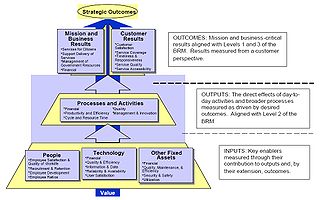Register now or log in to join your professional community.
Norm-Referenced test, Criterion-Referenced test, Informal test, Formal test

Criterion-Referenced test
A student's performance is measured against a standard. One form of criterion-referenced assessment is the benchmark, a description of a key task that students are expected to perform.
Chapter tests; Driver's License Test,are the example.

Performance measurement is the process of collecting, analyzing and/or reporting information regarding the performance of an individual, group, organization, system or component. It can involve studying processes/strategies within organizations, or studying engineering processes/parameters/phenomena, to see whether output are in line with what was intended or should have been achieved.
Performance measurement has been defined by Neelyas “the process of quantifying the efficiency and effectiveness of past actions”, while Moullin defines it as "the process of evaluating how well organisations are managed and the value they deliver for customers and other stakeholders”. Discussion on the relative merits of these definitions appeared in several articles in the newsletter of the Performance Management Association.
Good performance is the criterion whereby an organization determines its capability to prevail.
Performance measurement estimates the parameters under which programs, investments, and acquisitions are reaching the targeted results.
 Performance Reference Model of the Federal Enterprise Architecture,2005.[6]
Performance Reference Model of the Federal Enterprise Architecture,2005.[6]
All process of measuring performance requires the use of statistical modeling to determine results. A full scope copy of the performance of an organization can never be obtained, as generally some of the parameters cannot be measured directly but must be estimated via indirect observation and as a complete set of records never delivers an assessment without compression to key figures.
Several performance measurement systems are in use today, and each has its own group of supporters. For example, the Balanced Scorecard (Kaplan and Norton,1993,1996,2001), Performance Prism (Neely,2002), and the Cambridge Performance Measurement Process (Neely,1996) are designed for business-wide implementation; and the approaches of the TPM Process (Jones and Schilling,2000),7-step TPM Process (Zigon,1999), and Total Measurement Development Method (TMDM) (Tarkenton Productivity Group,2000) are specific for team-based structures. With continued research efforts and the test of time, the best-of-breed theories that help organizations structure and implement its performance measurement system should emerge.
Although the Balanced Scorecard has become very popular, there is no single version of the model that has been universally accepted. The diversity and unique requirements of different enterprises suggest that no one-size-fits-all approach will ever do the job. Gamble, Strickland and Thompson (2007, p. 31) list ten financial objectives and nine strategic objectives involved with a balanced scorecard.



